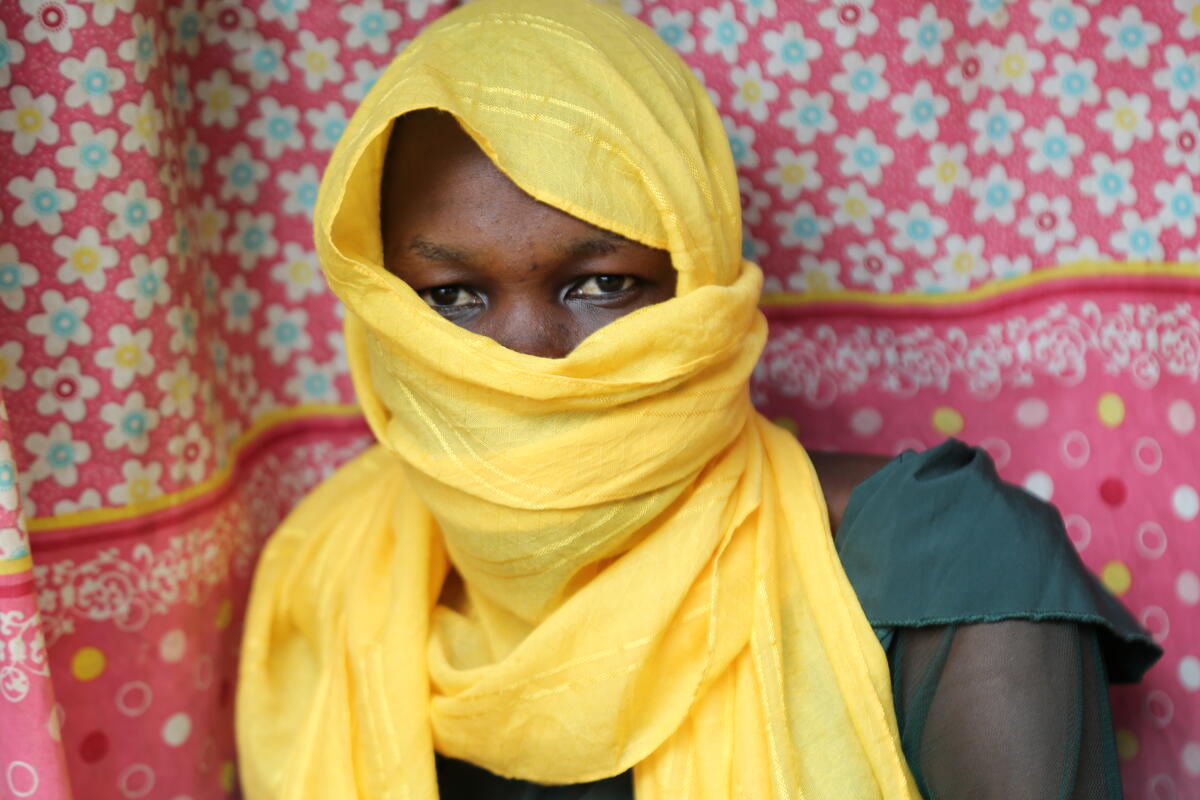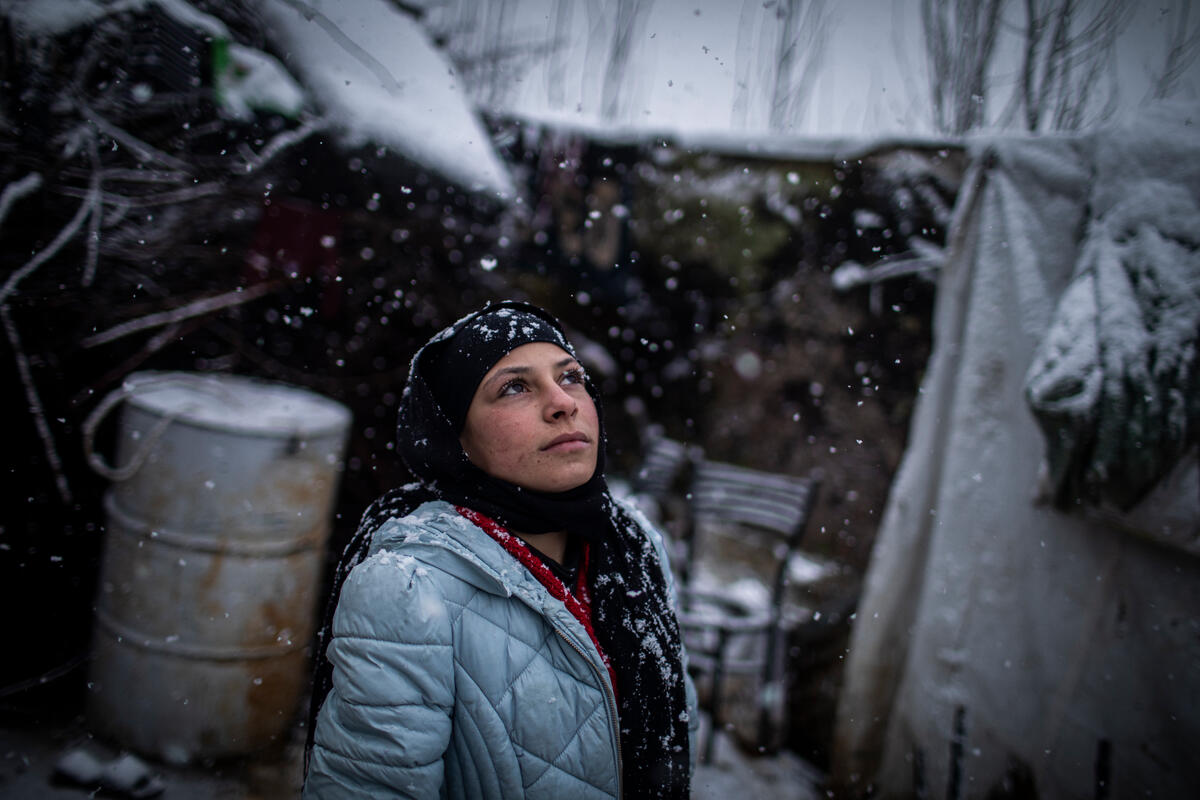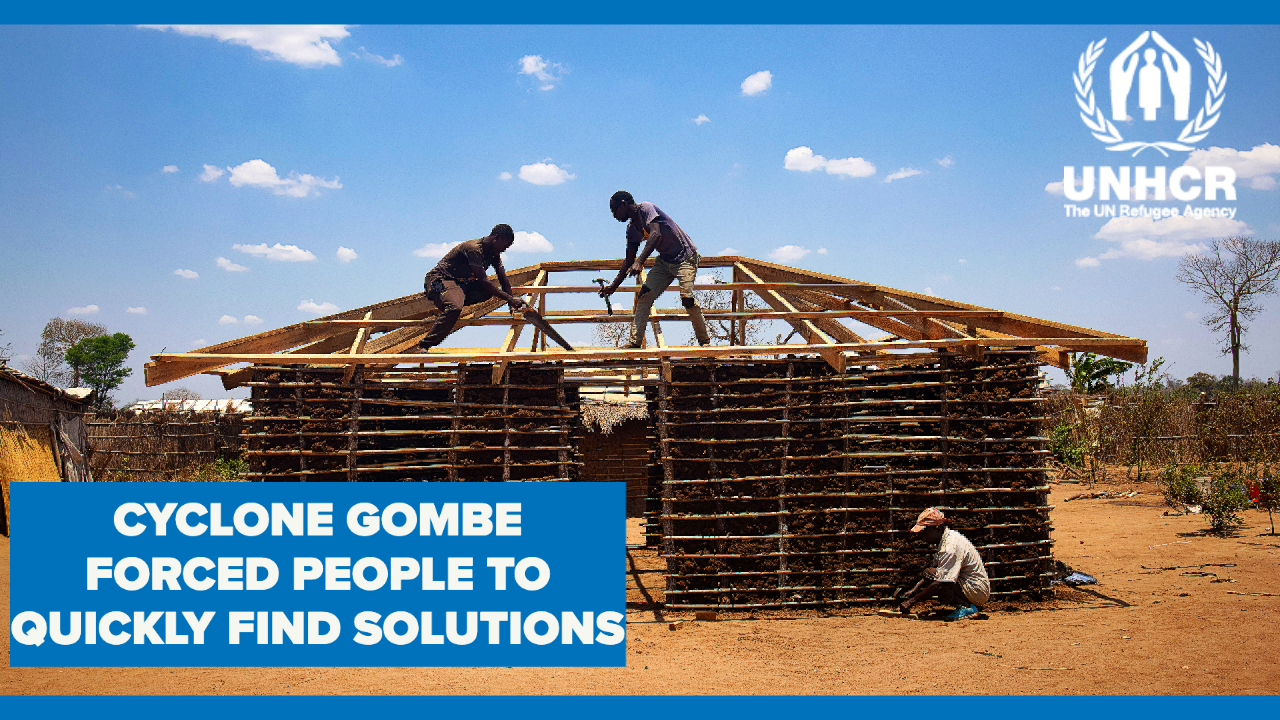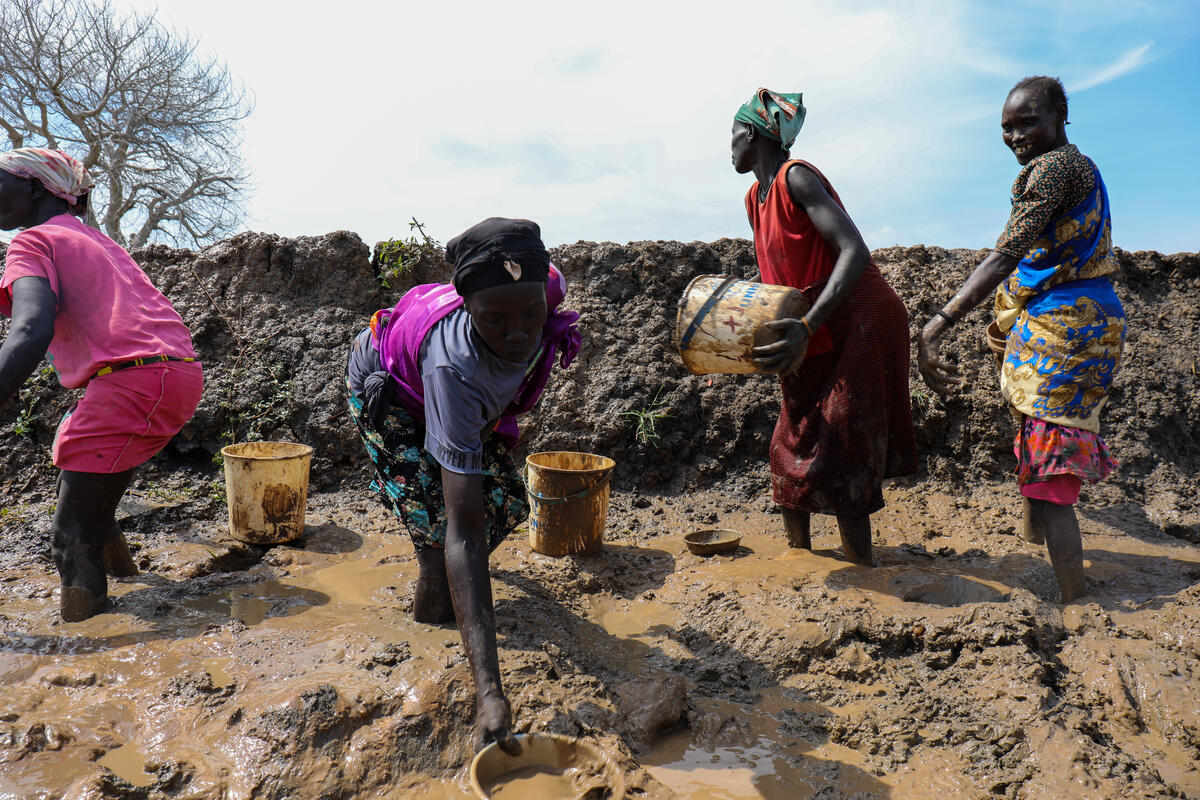Voices from behind the veil
Voices from behind the veil

PESHAWAR, Pakistan, November 6 (UNHCR) - The first thing you notice when you enter Kacha Garhi camp is the purdah - veil, in the local Urdu language - surrounding each tent. Supported by bamboo poles, most are made of UNHCR plastic sheets, while a few are a patchwork of blankets, gunny sacks and flimsy garbage bags.
Inside their veiled compounds, women mumble and feet shuffle as they enjoy the only privacy they have in the sprawling camp in Peshawar that houses more than 6,000 internally displaced people (IDPs) fleeing the fighting in north-west Pakistan's tribal and border areas between government troops and militants.
"As women, we can't go outside, and what would we do outside anyway?" says Mariam*, a displaced woman from Bajaur, one of seven agencies in the Federally Administered Tribal Areas (FATA) bordering Afghanistan. "We can't stay in the tent all the time, so we need the purdah to walk around freely in our compound."
While the purdah preserves their modesty in this traditional society, it could also hide the women's concerns and needs. UNHCR - as the lead UN agency for shelter, protection, camp coordination and management in this IDP operation - has identified privacy as an urgent protection issue and distributed plastic rolls to surround each block of 10 tents, securing purdah and free movement around the tents.
Mariam, in her 40s, lost some relatives, her house and corn fields in Bajaur. "I had just bought a vest for winter. But I had to run away with the clothes on my back. I'm very upset," she says. "When we heard about the ceasefire during [the Islamic fasting month of] Ramadan, we rushed back to save what was left. But we had to leave again when the bombing restarted after two days."
Her extended family fled for Peshawar, the provincial capital of Pakistan's North-West Frontier Province, and settled in Kacha Garhi camp. While they are grateful for the assistance they receive here, they are struggling to cope.
"My baby has diarrhoea and keeps vomiting," says Mariam's daughter Aziza*, in her 20s. "We saw the camp doctor but there's no improvement. We can't afford to send him to the hospital."
Access to affordable health care is a country-wide problem, but one that the in-camp clinic run by the International Medical Corps is trying to improve. The local authorities have alerted hospitals to accept all referrals from the camps to avoid the creation of a two-track medical system.
Sanitation is also a challenge despite the construction of separate latrines to cater to the special needs of women. "We don't go in the daytime - it's crowded and difficult with the burqa. We go at night with a flashlight," says Aziza. A generator has been installed for night-time lighting.
The women are discouraged from cooking inside their tents because of the fire hazard. Communal kitchens have been built as a temporary solution, and more women have agreed to use them after sensitization activities. But Aziza would still prefer to use an individual stove. "My husband is more religious than the preacher, I'm not sure he'll let me out to cook at the communal kitchen." Each family has received a steel stove and those who wish, have built their own kitchens with mud in front of their tents.
The children, too, are affected. Najibullah, her 14-year-old nephew, used to attend a private school in Bajaur. "I don't go to the camp school. There are not enough books and we play a lot of games like cricket and ludo," he said. UNICEF is increasing classes to supplement the existing arrangements.
Livelihood is also a problem - Aziza's brother saw his clinic in Bajaur destroyed, while another brother had to quit his job as a policeman for fear of the militants. Despite the coming winter, her husband has taken some quilts and blankets to sell outside the camp.
"It was so cold in the tent last night," says Mariam. "Winter is coming. We don't have warm clothes or shoes. You should distribute them tent by tent so that everyone gets some. If not, the strongest people will get them all."
To avoid a "survival of the fittest" syndrome, distribution is carried out based on registration. There will soon be a priority line specially for women and the vulnerable at all distribution points.
When they are first registered at Kacha Garhi, the IDPs are given an initial standard aid package of a tent, blankets, jerry cans, soap, buckets, sleeping mats, plastic sheets and a kitchen set. In addition, UNHCR has provided each head of household with a winterization package that includes four plastic sheets, three blankets per person, four sleeping mats and two mosquito nets. The agency's staff is going from tent to tent to supervise the winterization effort.
A women's community centre has been set where the women can gather outside their tents. The community is participating in the fencing of the camp to improve overall security and, more importantly, the physical safety of people living in the camp.
These are among many measures taken to improve conditions in Kacha Garhi - the only organized camp for IDPs at the moment. UNHCR and its partners are also working to ensure minimum living standards in the other spontaneous camps. A new site at Jalozai in Nowshera district of NWFP has been secured that can host up to 3,000 IDP families who could be relocated when overcrowded spontaneous camps are closed in the near future.
As for Mariam, she says her family plans to stay in Kacha Garhi as they cannot afford to rent a house in Peshawar. "We heard there's a curfew in Bajaur, we can't even peep out of our houses. I don't know what will happen in the future. But if the situation improves, we'll go back. This used to be an Afghan refugee camp. But the Afghans went home and they levelled the camp. It's the same for us."
* Names changed for protection reasons.
By Vivian Tan in Peshawar, Pakistan









